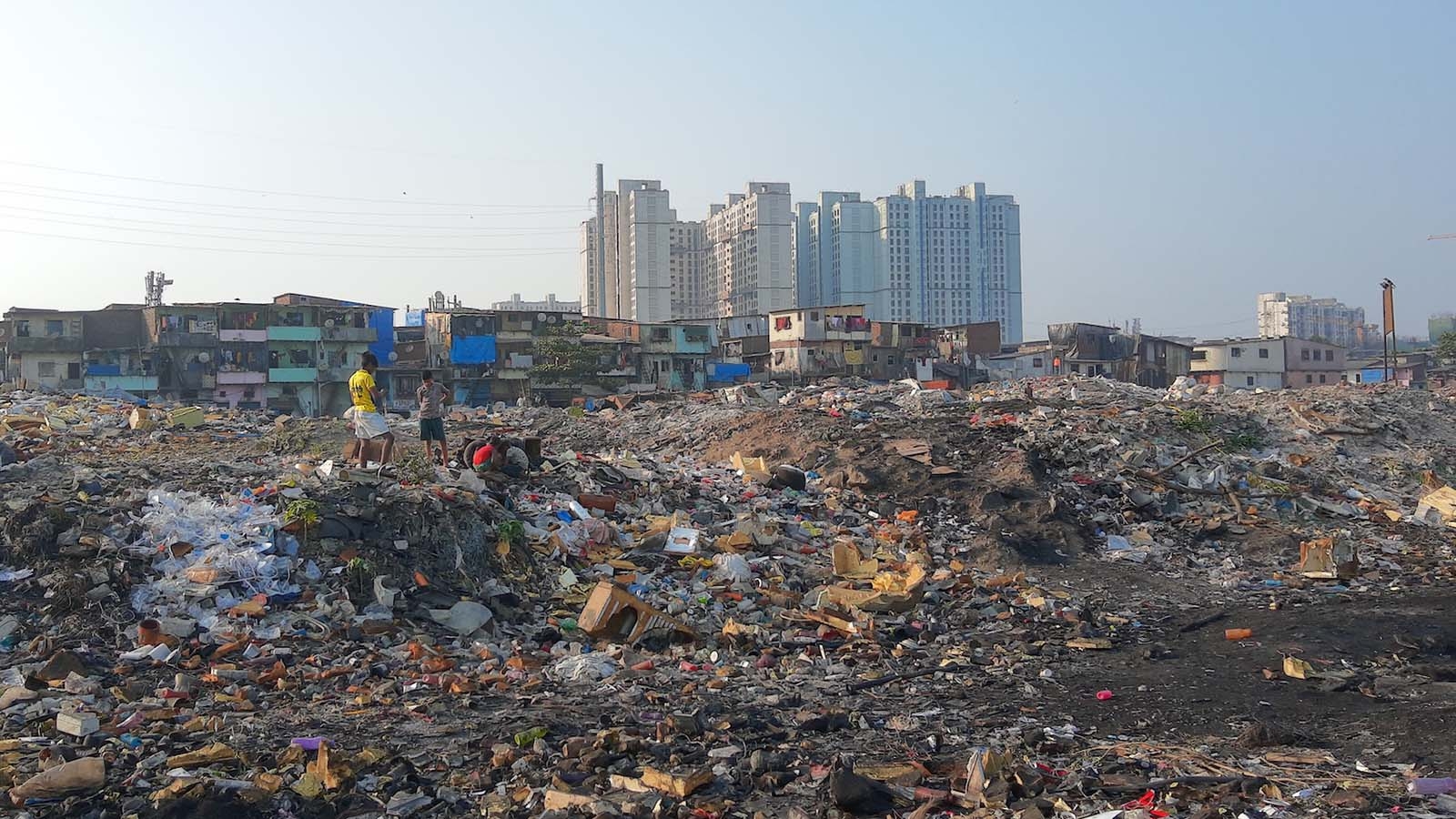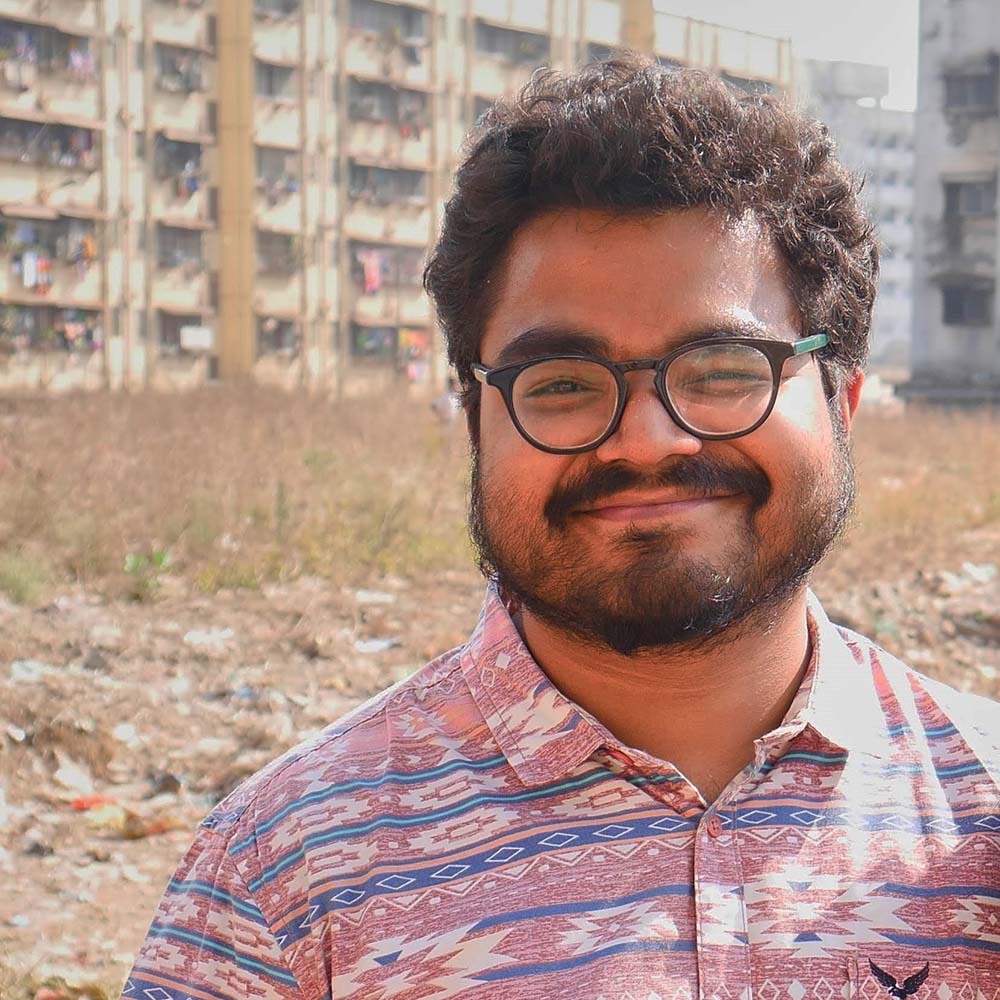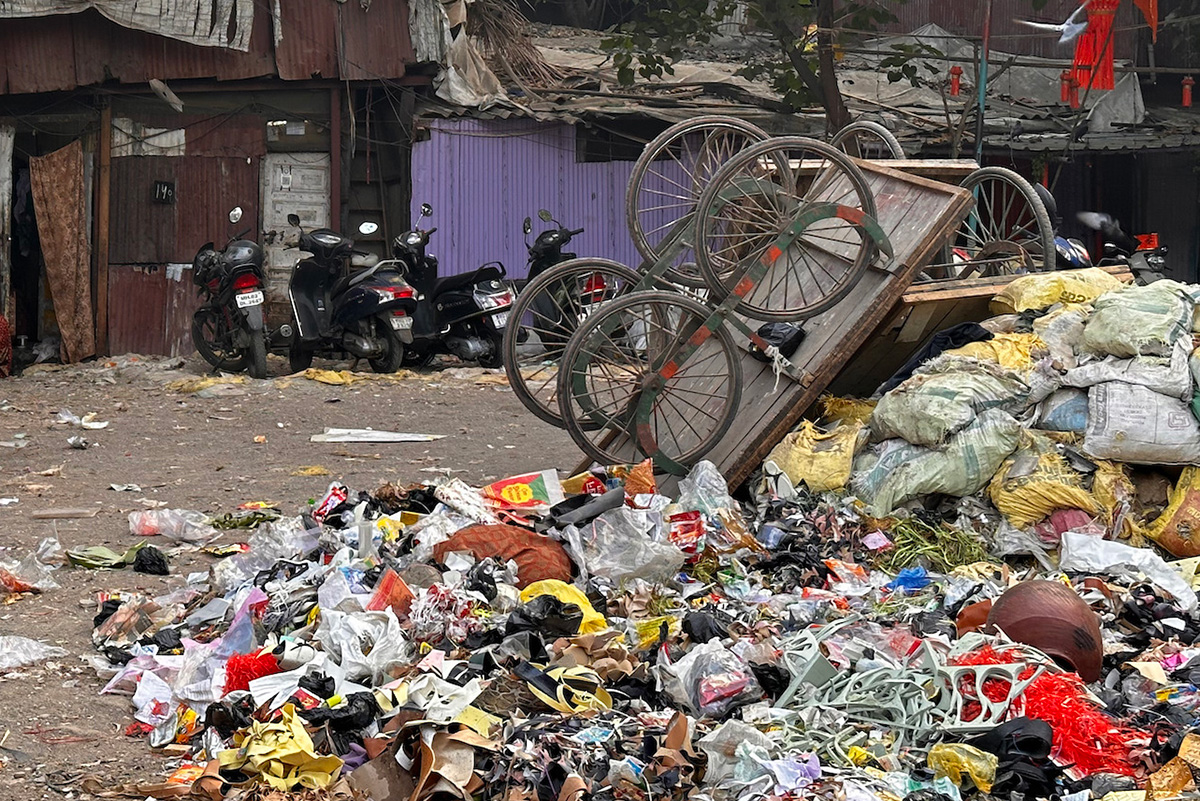Inside the Dumping Grounds of Mumbai
PhD candidate Adwaita Banerjee was on a mission to trace the path of recycled plastics through his city. The work led him to ask bigger questions about caste, racialization, class, and dignity.

In 2016, a fire broke out at Mumbai’s largest landfill, the Deonar dumping ground. Flames engulfed piles of plastic, rotted food, and biomedical waste. A suffocating cloud of smog hung over the neighborhood for days, and the smoke plume grew so large it was visible from space.
“We couldn’t see the sun for about a week,” says Adwaita Banerjee, then a master’s student at nearby Tata Institute of Social Sciences. “I decided that this was going to be my site of work.”
Banerjee, now a fourth-year PhD candidate in the Department of Anthropology at Penn, became fascinated with the messy reality of Mumbai’s waste management system. Today, he’s tracing the flow of plastic waste from landfills like Deonar to the under-regulated recycling facilities that border the city, talking to people on the ground and exploring how government oversight of recycling affects their lives. His work so far has revealed gaps in India’s sustainability plans and the impact that plastic recycling has on some of the most vulnerable people in his home country.
Mumbai’s Plastic Problem
Mumbai is home to more than 20 million people, and the city generates massive quantities of plastic waste. Trash from the majority of its residents doesn’t go to material recovery facilities, which separate recyclables and move the rest to dumping grounds. Rather, the unsorted trash—including some potentially valuable recyclables—heads straight to dumping grounds.

Adwaita Banerjee, a fourth-year PhD candidate in the Department of Anthropology
At these facilities and landfills, waste pickers sift through debris seeking plastics that fetch money on the recycling market. These workers separate valuable polyethylene terephthalate water bottles and high-density polyethylene milk jugs from flimsy low-density polyethylene plastic bags, recognizing the type of plastic from touch and feel alone.
The city government hires some of these workers, who earn the equivalent of $15 to $20 a day for their labor. But, says Banerjee, 70 to 80 percent of the waste workers are contractual and without official municipal employment. These informal workers, who often do the most dangerous parts of the job, are overwhelmingly migrants or people from India’s lowest social castes; men may pull in $5 a day, and women can make less than $2.50, according to Banerjee.
He says regulation at Mumbai dumping grounds and recycling centers is limited, and workers regularly get injured; he has met several who are missing fingers or toes from machinery accidents. Toxic gasses from the decomposing waste mean respiratory illnesses and eye irritation happen with greater prevalence. Feral animals prowl the dumping grounds, putting workers at risk of attack or disease.
But beyond the immediate physical danger, the job also entails a more insidious threat: the cultural persecution that comes with being a waste worker in Mumbai. Many are in the job out of circumstance, yet there’s a criminal stigma attached to them, according to Banerjee. Sometimes it’s based on real criminal records resulting from the murky legal landscape of working in the dumping grounds, he adds. Other times it’s untrue, based on assumption and association: People who work in the dumping grounds are labeled socially undesirable and stripped of their opportunity for future mobility.
“What happens to people when they’re labeled dirty?” Banerjee asks. “It’s heartbreaking.”
Another Side of Recycling
To understand this system, Banerjee created a research project to explore how plastic waste and recycling shaped Mumbai. Using ethnographic fieldwork techniques, he immersed himself with workers in the Deonar dumping ground and nearby scrap shops, following them on their daily routes, speaking to them about their lives, and conducting surveys about their work.
To learn about the bigger forces shaping these realities, he visited Mumbai’s waste management offices, where he gathered policy information and interviewed city officials, and he plans to hold focus groups with the international environmental consultants who advise Mumbai’s government. Finally, to document what he saw, he filmed the work around plastic waste recycling in Mumbai. These activities occurred with the permission of waste worker unions, NGOs, and local municipal organizations.
The system is going to get worse if it doesn’t take into account the people who are already working in it.
Though their livelihoods depend on it, many workers on the ground have told Banerjee they’d rather talk about anything but plastic. They’ve asked him about how they could get a visa out of the country, to visit Las Vegas or New York. They wanted to know how to overcome the criminal record or reputation they’d incurred from working in an area stigmatized by their own government. More than anything, they wanted to know how to get out of this line of work.
When Banerjee visited recycling plants on the city’s outskirts, he saw under-regulated facilities that put workers’ health at risk and released harmful pollutants. He wondered whether they did more harm than good. Rather than the environmental benefit that recycling intends to accomplish, Banerjee says, “it is putting people’s lives in danger.”
Toward a Sustainable Economy
In addition to speaking to waste workers about their working conditions, Banerjee wants to understand how local and international policy contributes to what he’s seen on the ground. So far, he says Mumbai lawmakers have taken a top-down approach, requiring that manufacturers recycle up to 50 percent of their plastics and shifting the onus onto citizens to sort their own waste.

(Image: Courtesy Adwaita Banerjee)
But Banerjee says he believes a just transition to a more sustainable economy requires a bottom-up approach, too, one that considers the well-being of workers in dumping grounds and recycling facilities and builds systems that integrates them in the planning and implementation of municipal waste management. Most importantly, the system should keep them safe. That change, he adds, will require documentation of where plastic goes and how it affects people’s lives.
“The system is going to get worse if it doesn’t take into account the people who are already working in it,” he says.
By January 2025, Banerjee will conclude what amounts to more than a year of fieldwork across waste management sites in Mumbai. In the future, he says he plans to work with advocacy organizations to improve waste worker safety, and hopes to one day build an archive to tell the story of plastics in these communities.


